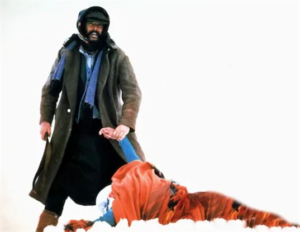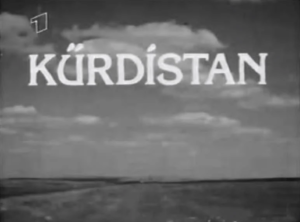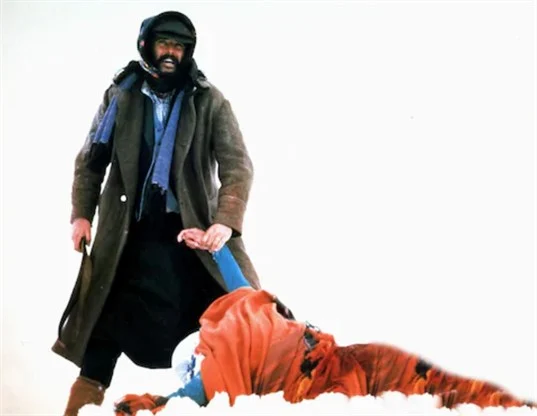THE FIRST KURDISH CINEMA CONFERENCE AND THE NATIONAL QUESTION
By Ali F. Sengul
While being politically fragmented has been a problem for the Kurds, one wonders if this multicultural existence as a result of the political fragmentation – Kurds living in the ‘four parts’ and those living in the diaspora, this state of double-spiritedness – would allow Kurds to give the world a ‘new cinematic language’. In fact, the main premise of the conference is the possibility of a ‘new cinematic language’… This language will be more universal and it will save us from the language of provincial broken cinema that has been imposed upon us.
Kemal Yıldızhan, Moderator, ‘Six Films, Six Geographies’
International Kurdish Cinema Conference, Diyarbakir, 2009
The provincial ‘broken cinema’ to which Yıldızhan refers is the Turkish national cinema and its representation of minorities in inferior and primitive roles. As part of an attempt to search for an alternative poetics of a Kurdish cinema and to ask whether a Kurdish cinema exists and how it could be defined, the first, and so far the only, international Kurdish cinema conference, ‘Six Films, Six Geographies’, convened in the city of Diyarbakir in Turkey in 2009, bringing together Kurdish directors from different parts of the world. Although during the last decade several Kurdish film festivals have been organised in different world capitals such as London, Paris, New York, Melbourne, Montreal, Berlin and Vienna, the Diyarbakir conference was the first occasion for Kurdish directors, critics and a large audience to share an organised platform to discuss ‘Kurdish Cinema’.
Discussions during the conference coalesced around the question of whether Kurdish cinema would be defined as a national cinema (contributing to, and an important part of, ongoing national struggle), or as part of transnational cinemas (diasporic, exilic, global art, etc.). The discussions were surely marked by the location of the conference and the positions inhabited by the audience members, as well as the filmmakers. Hosted by the proKurdish Diyarbakir Metropolitan Municipality, the festival was held in Diyarbakir, a location that has been the centre of Kurdish politics in Turkey since the 1960s and the epicentre of urban warfare between the PKK (Kurdistan Workers Party) and the Turkish army during the long 1990s.
As its location and institutional backing attest, the conference was endorsed by the Kurdish movement in Turkey. That it would be marked by the involvement of the state security apparatus at several stages was already expected, yet what was surprising at the inaugural conference was the disagreement between the filmmakers and the audience over the definitions of, and the future directions for, a Kurdish cinema. This disagreement can be interpreted through the differential spatial experience of the filmmakers and the audience, and the assumed political function each side ascribed to film production.
The aesthetic and political sensibilities of the directors, mostly living in diaspora in Europe, had been shaped by their deterritorialised existence and participation in transnational cinema culture, whereas the Diyarbakirite audience grew up and is politically socialised within the Kurdish national struggle for territorial rights.1 Since the start of the war in 1984, the population of the city increased exponentially due to rapid urban migration as a result of the systematic destruction of Kurdish villages as part of the war.
The traumas of war combined with factors such as overpopulation, petty crime and other markers of urban degeneration affected the shape of political culture within the city. On the other hand, the directors attending the conference were either from outside Turkey or had left Turkey before the spread of the war to urban centres in the Kurdish region. Miraz Bezar and Yüksel Yavuz left in the early 1980s and currently live in Germany. Hiner Saleem and Hisam Zaman are both from ‘Iraqi Kurdistan’, the former living in France and the latter in Norway. None of the attending directors whose films were shown experienced the ongoing war between the PKK and the Turkish army in the region, nor were they part of the political socialisation process in the Kurdish region of Turkey in the 1990s.
Instead of forcing Kurdish cinema into either a ‘national/ territorial’ or a ‘transnational/deterritorialised’ cinematic aesthetic, the Kurdish experience and its cinematic reflection can be used to problematise the dichotomous ordering of national and transnational. Indeed, the disagreement, while decisive throughout the conference, can be seen as a way of negotiating an aesthetics for a Kurdish cinema to exist. The content of the negotiation was whether this new cinema can accommodate both being a part of a national – spatio-political – struggle (both the directors and the audience concur on the political nature of making films on Kurds) and at the same time appropriate a more deterritorialised cinematic language without fetishising the national self.
For the directors, the spatial politics is of prime importance, and by being a part of a conference taking place in this particular city, they showed their position vis-à-vis the Kurdish ‘national’ struggle, yet they resisted the idea of making films only for/about Kurds and the ‘struggle’. Bezar, while his first feature-length film is about the effects of war on the city of Diyarbakir during the long 1990s, stated that his films might best be considered as part of diaspora cinema. Hisham Zaman stated that as a Kurd from Iraq, making films on Kurds is important for him, yet, living in Norway, it is not the only subject through which his films engage with issues of identity and belonging.
On the National and Transnational in Cinema Studies
The disagreement, while informed by the context of the festival, is not specific to the conference and should be read as a symptom of a larger methodological problem that inflicts debates on ‘national’ and ‘transnational’ cinemas. Within recent cinema studies literature, transnationality has been defined as a post-national moment during which the classical rubrics that used to define national cinemas – language, culture, identity, industry, state subsidy – are no longer functional at the national level. As part of globalisation and the organisation of capital at a global level through border-evading, transnational movements of people, technologies and films themselves, the transnational cinema framework defines the post-national politics and aesthetics of film productions by voluntarily as well as involuntarily deterritorialised filmmakers.
My point of entry into the national-transnational cinema debate is through the definition of ‘nation’ in both frameworks. Although in cinema studies, national and transnational are used dichotomously, both frameworks define ‘nation’ through national sovereignty in the form of the nation-state.
The argument that ‘nations’ are losing their ontological and epistemological currency in cinema studies in favour of larger scales is due to the definition of nation as nation-state.2 There has been a shift away from the study of national cinemas towards regional, transnational cinemas and world cinema, yet, in the literature, ‘national cinema’ is still reserved for the cinemas of nations with states, excluding the cinemas of non-state nations like the Kurds.3 Here, however, I will not claim nationality for Kurdish cinema – or for other non-state cinemas – although this would be the desire behind the Kurdish political movement, due to the affective resemblance between a national cinema and a nation-state. Instead, I aim to use the Kurdish case to problematise the identity of nation and state within the literature.4 Beyond the national vs. transnational (read also as territorialisation vs. deterritorialisation) dichotomy retained in most literature on non-Hollywood cinemas, Kurdish cinema can open the possibility of defining nation (national cinema) not through statehood and national space, but as a transnational critique of the nation-state and its spatial techniques.
In this way, we can redefine transnationality not as a post-national moment (referring to the waning of national borders), but as an aesthetico-political moment where nation can be defined outside the nationstate by problematising but at the same time strategically appropriating deterritorialisation as an ethico-political stance against state sovereignty. In the case of Kurdish cinema, this cannot be better seen than through the analysis of ‘Kurdistan’ as cinematic space in Kurdish films.
The opening remarks by Yıldızhan speak to the spatial imaginary of Kurdish cinema. Although Kurdistan is at the centre of the Kurdish movement and of Kurdish films, I argue that as a cinematic space it does not correspond to a nationality sealed with borders: it is rendered visible only through other national borders – Turkey, Iran, Iraq, Syria – crisscrossing and dividing it into four parts.
What makes theorising Kurdistan as a cinematic space both difficult and necessary is its centrality in the Kurdish national movement and its fragmented cinematic visibility. For the diaspora filmmakers, the existence of a national attachment to Kurdistan is mediated by this already fragmented spatiality.
This relationship prevents the filmmakers’ attachment from being nostalgic: nostalgia for a nation/home left behind. The borders crisscrossing this spatiality haunt an otherwise unproblematic attachment to a coherent nation-space as home. What happens instead is that the filmmakers through their films claim this particular spatiality as Kurdistan. Hence, the mode of attachment on the part of the directors is not ‘longing’, but an active claim. Yet this claim is not for a national space – or the state. On the contrary, in the films shown during the conference, the national space is made visible through the violent mechanisms embodying it, such as land mines, barbed wires, and border patrols.
This mode of critical engagement in national space precludes the possibility of imagining Kurdistan as yet another national space. Instead, the production of the space of Kurdistan is made possible through the non-violent agencies of its characters. The films deny violence – even what can be deemed revolutionary violence – to their characters. However, the characters are not represented as the victims of state violence: they gain their visibility and subjectivity not through victimhood, but through disengaging themselves from violence. Gulistan in Min Dît and Aliúan in Press refuse to use violence even when they have the opportunity.
Yol (The Road, 1982) by ùerif Gören was the first film in which Kurdistan entered the space of Turkish cinema. I suggest that the film introduced Kurdistan as a ‘supplement’ through deconstructive politics to problematise national space as presence, rather than offer Kurdistan as positivity (read as nation-space). In the film, the visibility of Kurdistan works only through this deconstructive function.

Yol and ‘Kurdistan’ as Supplement: The Space of Kurdish Cinema
Yol was a turning point in cinema in Turkey in terms of its configuration of cinematic space. The film not only produced an uncompromising critique of the repressive state apparatuses within the Kurdish region in Turkey, but also diverged from the national cartography of cinematic space for the first time by introducing ‘Kurdistan’ as a new cinematic space. The film follows five prison inmates en route to their hometowns in the Kurdish region during a national holiday break. As they travel through the national landscape, the film shows the road signs of the cities they pass.
Finally, when the bus is driving one of the inmates, Ömer, through the city of Urfa, located at the western border of the Kurdish region, we see the inter-title ‘Kurdistan,’ superimposed upon the landscape. The Kurdistan ‘sign’ was added by Yılmaz Güney during the editing process in Europe,6 but was excised from the versions released in Turkey.7 Güney’s cinemato-graphing of the political space redraws the map of the region where the film takes place in accordance with Ömer’s politico-cognitive attachment. This authorial supplement refers, for the first time, to a discrepancy between the national cartography and cinematic space.
The new cartography, however, does not work out in Ömer’s favour. His happy and excited face when he gets off the bus and steps into the middle of a vast landscape quickly turns to fear as he gets closer to his village, where the sound of automated machine guns becomes audible. The nearer he gets to his village, the more frequently the gunshots explode.
This short-lived excitement and sense of freedom disappear as he reaches the outskirts of his village, which, as he soon figures out, is surrounded by the gendarmerie in search of smugglers. Ömer could enter the village only after all smugglers surrender after a fierce shootout. The operation against the smugglers on the mountains continues the entire night. The next day, the gendarmerie brings the dead bodies of the smugglers for identification; although Ömer’s brother is among them, he cannot yet claim the body for fear of retaliation. In the end, he is seen riding his horse along with other smugglers to the mountains outside the village.
Though Yol has been frequently commented upon by critics and scholars, the part where Güney inserted the sign ‘Kurdistan’, has been missed – or skipped – within these comments. This lack of scholarly attention may be partly due to the excision of the part in the ‘Turkish’ version, yet in the few comments that do refer to it, it is dismissed as being not part of the original film but added as an afterthought by Güney. But if a film is finalised during the editing process, when all its parts are assembled, the dichotomy between what constitutes original and what addition becomes problematic. We can even argue that, since the film was only supervised by Güney from prison and was directed by his assistant, the ‘addition’ is Güney’s only directorial imprint.
Yet in discrediting the ‘addition’, there is more at stake than the film and its truth-value. What makes the sign inferior to, and less original than, the rest of the film, is the preconviction of the commenter on what he considers original: the national territory. We can make sense of this hierarchy of original/addition within the cartography of the film (the very position of the extra footage, the ‘excess’ within ‘the reel’) only in connection with the national cartography (the truthvalue of its map and Kurdistan as ‘addition’): the belief in the national territory and the disbelief in what the sign refers to – Kurdistan. The ‘real’ cartography here determines the limit of cinematic space.
There is also the itinerary of the film’s completion process. In order to finish the film, Güney fled Turkey to Switzerland where he was ‘present’ during the editing process. His absence from Turkey made the completion of the film possible. However, to understand this arbitrary original vs. addition debate, one can claim from the perspective of Derrida that the sign works as the “supplement” to national cartography as ‘presence’.
In discussing Jean-Jacques Rousseau’s work on ‘writing’ as a destruction of the presence constituted in speech, Derrida employs Rousseau’s oft-used term ‘supplement’ to deconstruct this and other dichotomies of absence and presence (original and addition) in his texts through recourse to its double meaning as a.) an addition to something already complete and b.) as substituting a lack, thereby completing what is already claimed as complete.
Kurdistan as ‘sign’ within the film’s cartography and Kurdistan as geography, taken as ‘supplement’ or “exterior addition” (p. 145), may be regarded as serving to give completion – only in the sense of providing the complete picture of what constitutes ‘national territory’ as presence. While the film was shown ‘outside’ Turkey, and Güney received the Cannes award for it in France, it was banned – absent – in Turkey until the late 1990s. When it was finally shown in Turkey, the absence of the sign further revealed the complicity of the geography of exhibition and its cartographic determinants, as well as the geography of the film.

The comments on originality within the film suggest that the limit of the originality of the film as it could be shown in Turkey constitutes its overall authenticity. The film, however, problematises the arbitrary equivalency of the geography of exhibition (its authenticity depending on what can be shown in a particular place) and the geography within the film (both the sign as place and as extra footage). Variably, the film becomes complete either through the excision of the part, which is exactly what happened during the public screenings in Turkey, or through that part that is deemed as addition, as supplement.
While the film was shown ‘outside’ Turkey, and Güney received the Cannes award for it in France, it was banned – absent – in Turkey until the late 1990s.
Kurdish Cinema: Towards a Non-violent Cartography?
The persistence of Kurdistan as a discursive space and the impossibility of imagining it as a homogenous nation-space, and moreover the exclusion of a nostalgic attachment to it, is negotiated within Kurdish films through certain sites. These are iconographic sites produced at the intersection of the violent spatial techniques of the state and the tactics of the inhabitants. Press (Sedat Yılmaz, 2010) and Min Dît (Before Your Eyes, 2009) by Miraz Bezar take place within the city of Diyarbakır in the most intense period of urban warfare during the mid-1990s.
In Press, which is about the well-known pro-Kurdish daily Özgür Gündem (Independent Agenda), the journalists, with the help of the local populace, form a newspaper distribution network in the city to evade the incursions of the security forces. Despite constant attacks, the editor of the daily forbids the journalists from carrying guns, even for self-defence.
In Min Dît, the use of the prohibited Kurdish language is part of the production of space in the city by the Kurdish characters; the security forces, on the other hand, use only Turkish. It is heard very early in the film, immediately before 10-yearold Gulistan’s parents are shot dead by the police officers who stopped them in their car for interrogation.
When Gulistan later sees her parents’ murderer in the city, she works out a plan to avenge their death. Instead of killing the police officer with his gun, which she has stolen from his apartment, she distributes in his neighbourhood a flyer she prepares that explains, with his photograph, his real occupation as assassin.
Ax (The Earth, 1999) by Kazım Öz takes place during the same period in a village evacuated by Turkish security forces to fight the PKK. In the film, the old Zelo, the only one left, remembers through flashbacks the village’s inhabitants before the evacuation. The juxtaposition of how the village previously was and how it now is provides testimony to the catastrophic effects of state-spatial practices in the region.
Bahman Ghobadi’s films take place on the borders of Turkey, Iran and Iraq to depict the fragmented existence of Kurdish space; they deal with families whose lives are divided by borders they must cross to stay alive. Zamani Barayé Masti Asbha (A Time for Drunken Horses, 2000) tells the story of orphaned siblings taken care of by the oldest brother who has to do border smuggling across the heavily mined Iran-Iraq border. Niwemang (Half Moon, 2006) is about a family of Kurdish musicians trying to cross into Iraq to perform at a concert celebrating the fall of Saddam Hussain. Gomgashtei dar Aragh (Marooned in Iraq, 2002) is about an old musician who wants to cross the border into Iraq to see his dying ex-wife.
Conclusion
The attachment to a national struggle while simultaneously sustaining a critique of the production of nation-space informs the deterritorialised cinematic aesthetic of Kurdish directors. The spatial claim together with the deterritorialised ethical commitment may provide a corrective to the dichotomously situated national-transnational frameworks by showing how they are not only not in binary opposition – both take national sovereignty for granted – but the processes embodying them may be mutually productive.
To cinema studies works which equate the ‘national’ with stasis and the ‘transnational’ with (post-national) mobility the study of Kurdish cinema brings the possibility of thinking of ‘the national’ outside state sovereignty, as a transnational ethico-political engagement. This critical position is a main condition of possibility for the existence of a Kurdish cinema as ‘national’.
Notes
1 Min Dît [Before Your Eyes] (2009) by Miraz Bezar, an account of the war-torn city of Diyarbakir during the 1990s from the perspective of two kids whose parents are assassinated by the secret police, was criticised by the audience for misrepresenting the political ‘facts’ of the decade, and for being unable to capture the ‘revolutionary atmosphere’ in the city during the 1990s.
Kilometre Zero (2005) by Hiner Saleem was dismissed due to its mixed-up linguistic map of ‘Kurdistan’. The film is about an Iraqi Kurd, Ako, who is enrolled in the Iraqi army and assigned to drive a martyred fellow-Kurdish soldier across the Turkish border. The audience reacted to Ako’s Kurmanci dialect, claiming he would be more appropriately represented if he spoke in Sorani, a dialect spoken in the Kurdish region in Iraq.
2 The edited volume, The Cinema of Small Nations, by Mette Hjort and Duncan Petrie is a recent example of defining national cinemas in terms of cinemas of nation-states.
3 We can add to the list Palastinian cinema (Dabashi, Tawil), Quebecois cinema (Marshall) and Basque cinema (Martí-Olivella). The problematic definitions of national cinema aside, being a part of Westphalian system is required for films to attend international film festivals when the nationality of a director is not in sync with his/her national identity. For a discussion of the cartography of international film festivals and Palestinian filmmakers’ terms of presence in it, see Dabashi.
4 The issue of sovereignty is not the only modality through which ‘transnational’ studies deal with ‘nationality.’ In critical transnational studies, the homogenising and reductive premise of national identity – and the importance of studying the sub-national as well as the supra national identities of class, gender and minority – became points of intervention. While I attend to this line of inquiry, here I am interested in the primacy of ‘national’ struggle in the Kurdish context. Post-nationality, both in the sense of a waning of national borders and a critical methodology of studying other identities, is not able to explain the persistence of national struggles. The contemporary national struggles, mediated by transnationality, may critically avoid state nationalism.
5 In Klamek Ji Bo Beko [A Song For Beko] (1992) by Nizametting Arıç, a German émigré from Turkey, Beko’s brother, just about to leave Turkey to avoid compulsory military service, explains to him a map he draws on the ground of how he would navigate his way out of Turkey to the south. While the map is supposed to be Kurdistan’s, it only shows the borders he has to move across within Kurdistan to reach the Kurdish guerillas.
6 The film is directed by Güney’s assistant Serif Goren, based on the meticulously detailed shooting script written by Güney himself in prison. After the completion of the production process, Güney escaped Turkey with the footage and the post-production was completed in Sweden.
7 I have reached three different copies of the film. One is the version released outside Turkey with English subtitles and retaining the ‘Kurdistan’ sign. Another shows the city of ‘Urfa-Siverek’ instead of Kurdistan. In the DVD version released in Turkey, neither the Kurdistan sign nor Urfa-Siverek appears.
8 Jacques Derrida. Of Grammatology (Johns Hopkins University Press, 1976, Baltimore), p. 142.


